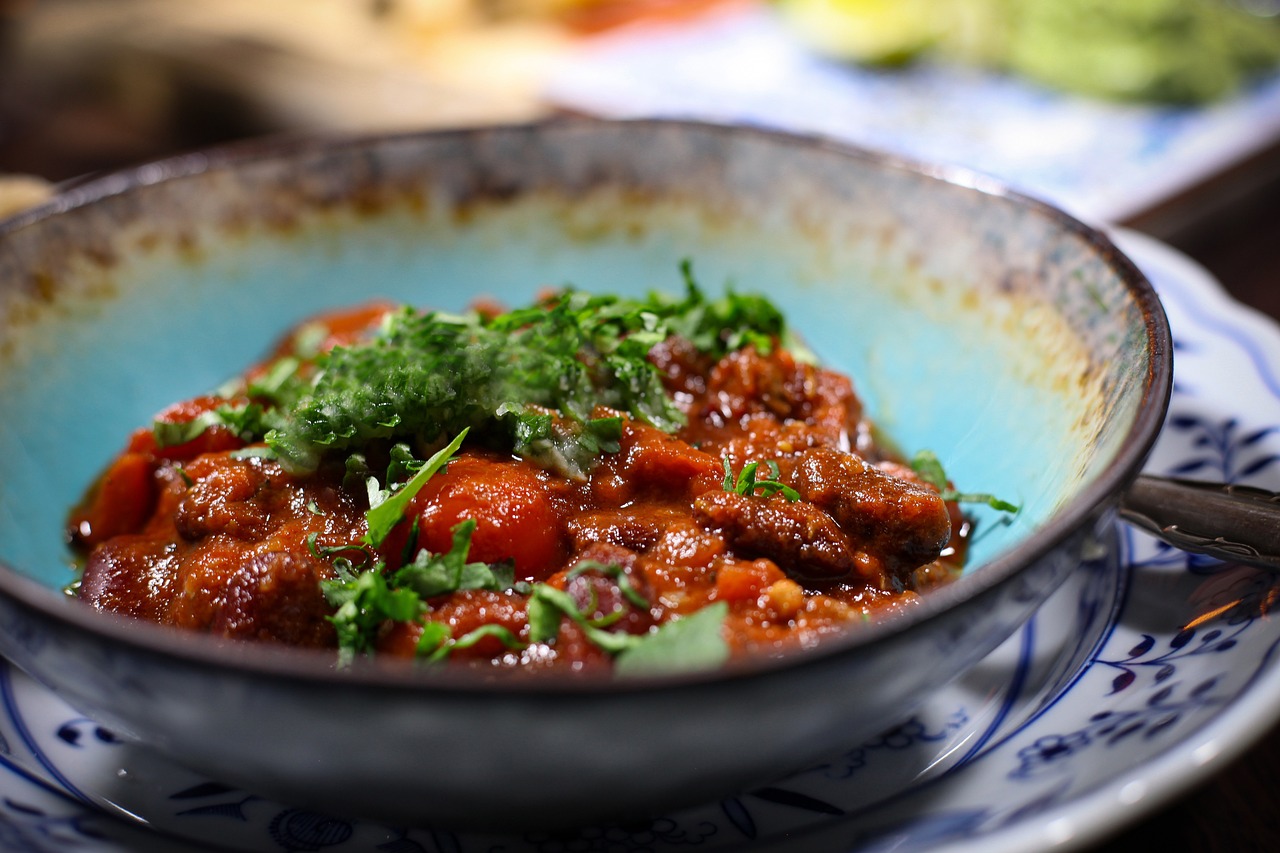Chili Season is Upon Us
For me, there is no dish more associated with winter than a steaming pot of chili. It’s essential comfort food, a great antidote to a frosty night, not to mention a football game day staple, as well as the focus of a multitude of cook-offs in communities across the country.
Chili’s origins date back to the ancient civilizations of Mexico, but the dish began to catch on in the U.S. in the 19th century, when women (known as “Chili Queens”) started opening chili stands in downtown San Antonio, Texas. Eventually, chili became so identified with Texas that the legislature passed a resolution declaring it the official state dish.
While the Texas version of chili known as “Texas Red” typically features beef but no beans, the concept of chili has evolved and expanded to embrace as many variations as imaginative cooks can come up with. Just about the only constants in terms of ingredients are chili peppers, which give this hearty stew the kind of heat that does not come from the stove. But there’s no need to be a jalapeno fiend to love chili. In keeping with the dish’s infinite adaptability, the heat level in a recipe can always be adjusted down, according to your taste.
Over the years I’ve made all kinds of chilis, including white chilis—some made pale and creamy with an abundance of sour cream, and other, more brothy, soup-like concoctions. I recall one delicious chili recipe (now lost to the mists of time) that involved chunks of beef and butternut squash made tender by hours spent in a slow cooker. I once made a chili that featured white beans, ground chicken, and canned pumpkin puree. Since then, I’ve found that pumpkin puree (even better when you make it yourself from a winter squash from your CSA share) can be a great, nutritious addition (and thickener) in chilis of all stripes.
For chili purists, and those who like it spicy, The New York Times Cooking site offers a classic chili con carne recipe which calls for three (!) pounds of meat and even some bacon (but no beans). It also calls for five dried ancho chili peppers (stems and seeds removed). Three are toasted in a pan and then ground into your own homemade chili powder, and two are cooked whole in the pot of chili, then removed and pureed and stirred back in.
I’ve found a trove of chili recipes in a great little cookbook I have on my shelf called The Wooden Spoon Book of Home-Style Soups, Stews, Chowders, Chilis, and Gumbos,by Marilyn M. Moore. (It was published in 1992, but you can still find it as a reprint or from a used bookseller.) The book includes a clever green tomato chili for when you don’t know what to do with all those late season tomatoes that won’t have a chance to ripen, a “Super Bowl Chili” that adds chopped pork to the usual beef, and a wonderfully mole-flavored “Chocolate Chili.”
The book also features a number of recipes for vegetarian chili—which I have come to prefer over the years in the interest of health, reducing my calorie intake, and eating lower on the food chain. Among these are a chili recipe that incorporates wheat berries for a meaty texture without the meat; a white chili that omits the beans, but uses whole kernel corn instead; and a chili that is packed with a slew of vegetables, including lima beans, and includes a touch of allspice for an interesting flavor twist and a tablespoon of cornmeal as a thickener
Another vegetarian chili recipe that has become a staple of my repertoire comes from my well-used copy of the Moosewood Restaurant Low-Fat Favorites cookbook. It’s called “Festive Black Bean Chili” and is simple to make, using store-bought salsa for an extra punch of flavor and frozen corn kernels for a nice touch of color.
But one of my all-time favorite vegetarian chili recipes—one I have been making for decades and have taken to more potlucks than I can count—appears in The Frog Commissary Cookbook by Steven Poses, Anne Clark, and Becky Roller. (Philadelphia area readers of a certain age may recall the beloved and pathbreaking Frog and Commissary restaurants, and catering operation, that Poses ran in the 1970s and ’80s.) Along with tons of vegetables (onions, celery, carrots, mushrooms, peppers) this flavorful “Vegetarian Chili’ includes kidney beans and bulgur wheat, which becomes an inexpensive and ingenious substitute for ground meat. (The reprinted recipe on the “Chili, Chili Food & Love” blog we’ve linked to here doubles the original recipe, something I always do to ensure plenty of leftovers.)
Finally, I’m here to say that chili is one of those totally forgiving dishes. Almost anything goes, except for bland flavoring. So pump it up, and feel free to improvise and innovate.
FYI: Got a yen to host a chili cookoff? Here’s a great post with tips on how to do that from the Taste of Home blog.
Origin of Chili: Does Chili Come from Ancient Mesoamerica? | History Cooperative
Classic Chili Con Carne Recipe – NYT Cooking (paywall)
Festive Black Bean Chili from FatFree
Moosewood Restaurant Low-Fat Favorites
Vegetarian Chili (Frog Commissary Cookbook) in honor of Vegetarian Awareness Month 2020 (do NOT click on “Continue to Recipe. The recipe is right on the landing page.)
How to Host a Winning Chili Cook-Off | Taste of Home
By Eils Lotozo

